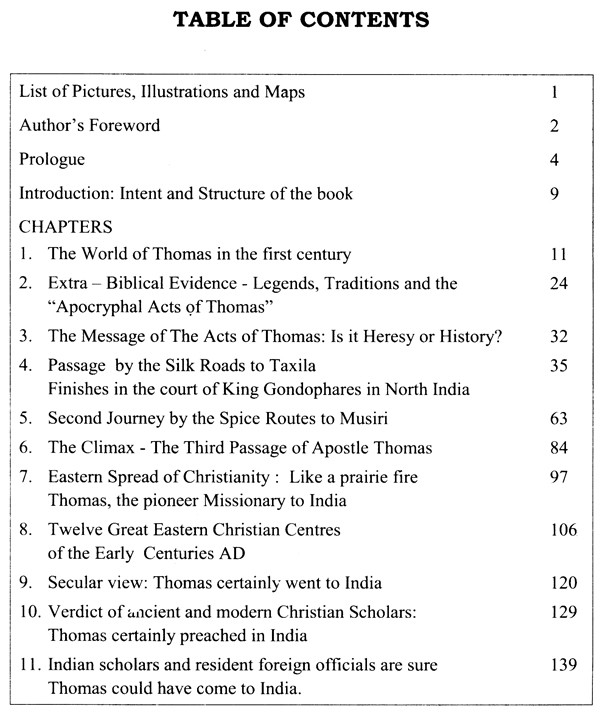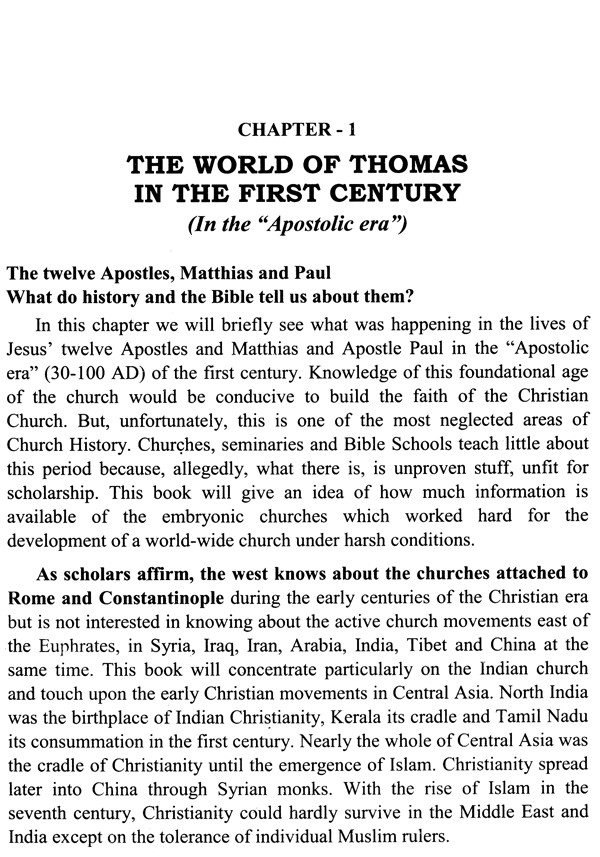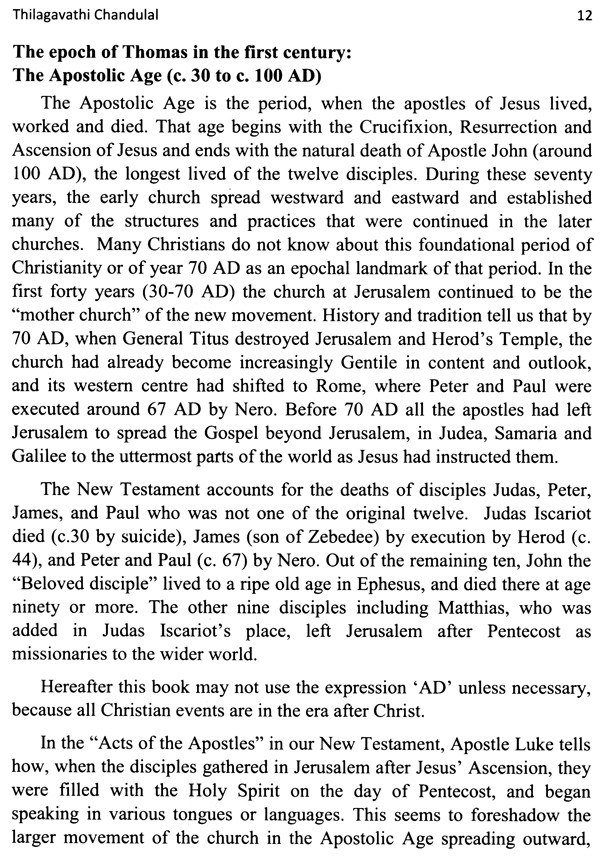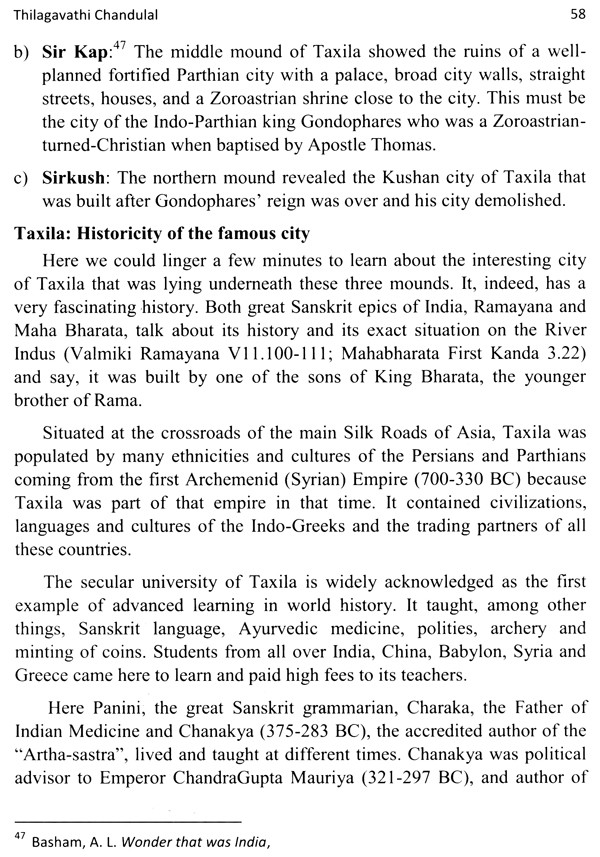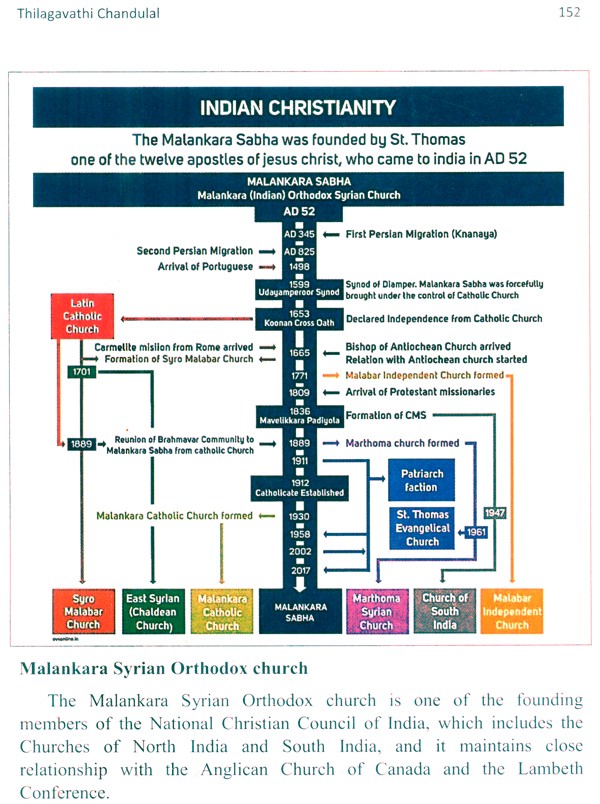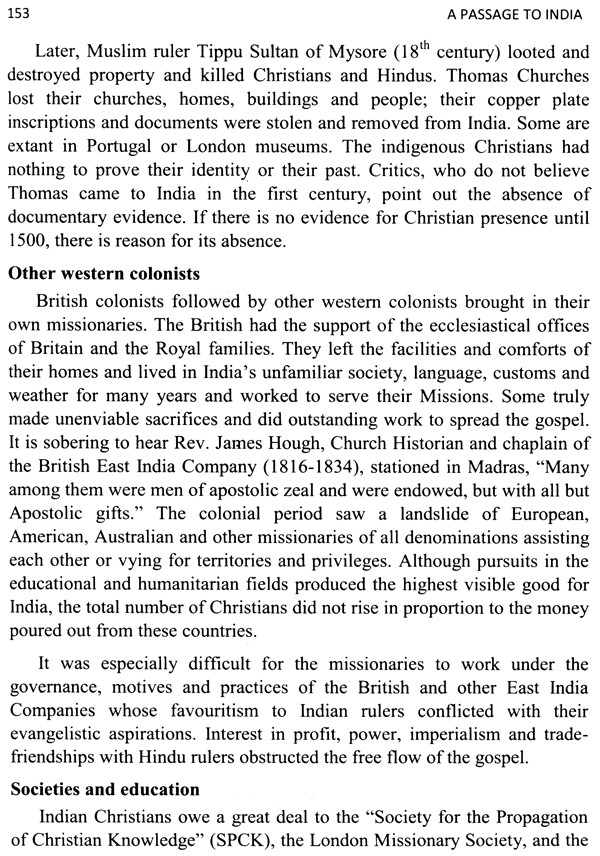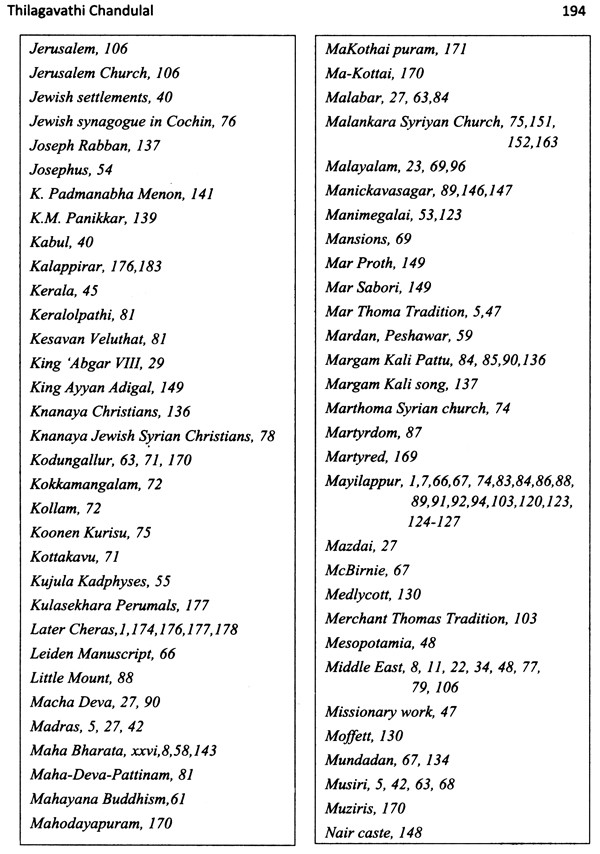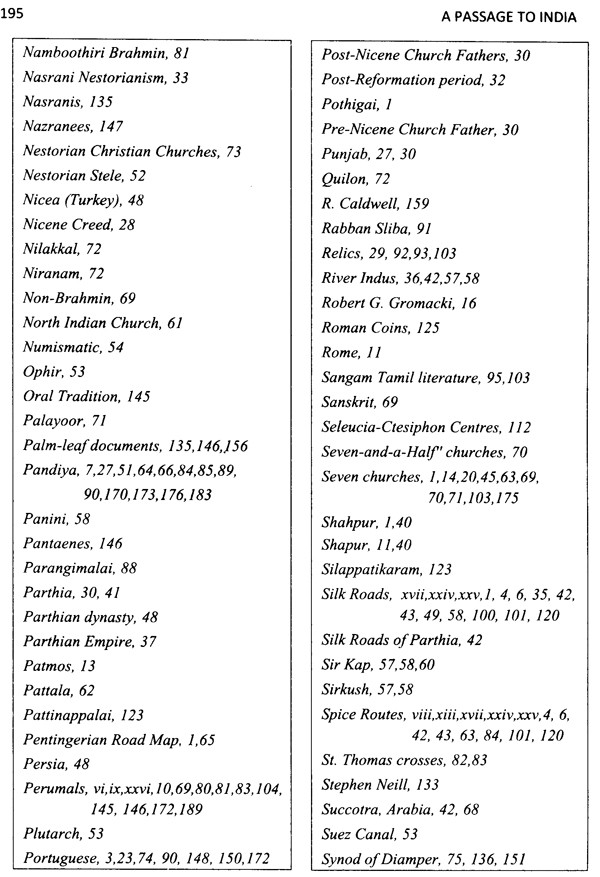
A Passage To India- The Apostle Thomas Goes to Build Mansions
Book Specification
| Item Code: | AZB590 |
| Author: | Thilagavathi Chandu Lal |
| Publisher: | Institute of Asian Studies, Chennai |
| Language: | English |
| Edition: | 2021 |
| ISBN: | 9788187892823 |
| Pages: | 220 (Throughout Color Illustrations) |
| Cover: | PAPERBACK |
| Other Details | 9.50 x 7.50 inches |
| Weight | 440 gm |
Book Description
From her early years she loved Tamil literature and Indian history, and studied Indian religions in relation to Christianity. She served as a Gynecologist and Obstetrician in the Christian Medical College in Vellore, passion Hospitals in India, Government hospitals and the University of Mulcat in the Middle East, she settled down in Canada, where she took 'Y and assisted the Sri Lankan refugees in Toronto as a Missioner.
passed her MA in Philosophy, eastern and western, and received the 2012 Distinguished Graduate Student Award. Now she is finally retired lives with her daughter's family in Woodstock, Ontario, Canada, and enjoys painting.
I really wish if Dr. Thilagavathi's book, "A Passage to India: The Apostle Thomas Goes to Build Mansions" would have existed then when I was doing my seminary education! Better late than never!' I would like to see this book added as a prescribed text in the seminaries and religious institutions.
I am confident this new book would be an added resource to learn, unlearn and relearn about Christianity's existence in India way long before India became a British colony! Whenever someone asks me if my for parents became Christians because of British influence, my ears get so irritated as if I am hearing a wrong musical note! Hereafter, I have a resource to give a copy of this book to whoever asks me that question.
Thomas coming to India has been very much a contested "hot button" topic in the world of Christian academia. There have been three traditions of the academic thought process regarding Thomas and his connection to Indian sub-continent. 1. Thomas came to North India 2. Thomas came to South India 3. Thomas never came to India.
Due credit should be given to Dr. Thilagavathi for her bold adventurous rhetorical attempt in making a case and standing to the ground of Thomas' apostolic missionary journey from Jerusalem to India, his presence and contribution to Indian sub-continent!
This book is neither a fiction nor a canon. This is a culmination of an ongoing historical documentation of available primary, secondary and oral history about Apostle Thomas and his ministry and people during that time in Indian subcontinent! Recently, there has been an increased attempt in academic circles to accommodate oral history and oral traditions of a particular context and culture as an important supporting document while presenting and debating a thesis or antithesis! There are even oral history methodology disciplines in existence in the past few decades. When it comes to documenting history, life and anthropology about life in global south oral history or oral traditions cannot be ignored. It is a huge disservice to the very cause of why it is being documented in a story telling narrative.
Each chapter in this book very well weave through history, chronology, archaeology, musicology, theology and anthropology of Apostle Thomas, people and life during those times in middle east and in the silk road, spice routes, philosophy, literature, arts and music to make firm case of the coming of Apostle Thomas.
Apostle Thomas' influence can still be seen and experienced from the daily grind of Syrian Christians aka Thomas Christians in south India! This is one piece of the many puzzles of Thomas' presence in India. Dr. Thilagavathi has done justice to bring out these stories all the way from "Silk Road", "Spice Routes", "Grandeur", "Taxela", "Kerala", and "Chennai”! While reading this draft, myself being a Tamil, I was paying close attention to the chronology and story line of Apostle Thomas' connection to the Tamil people.
The Prologue is a preview of the whole book so that the reader will be ready to start reading the book from the beginning, or will choose to read whatever interests them.
Each chapter begins with a brief summary of its content and closes with a statement of what is accomplished in it, and introduces the next chapter.
Chapter one gives a bird’s eye view of the first century world of the twelve Apostles of Jesus.
Chapter two examines the evidence of legends, traditions, history and writings available regarding Apostle Thomas in the early centuries.
Chapter three scrutinizes the Apocryphal "Acts of Thomas." As this apocrypha is our chief source of knowledge about the work of Thomas in India, it is mostly abbreviated as "the Acts." So readers will know "the Acts" in this book is not "The Acts of the Apostles" of the New Testament.
Chapters four, five and six are about Thomas' life and work in three regions of India: 1). The Punjab, the Land of the Five Rivers in north-west India, (mostly what is modem Pakistan), 2). The Malabar Coast (the land of mountains) of south-west India, and 3). The Coromandel (Coastal Land) of the south east coast of India where Thomas was martyred. Chapter seven is about the eastward spread of Christianity in nearly the whole of Central Asia and India in the first century.
Chapter eight presents the geographic history of twelve major Christian centers in the fertile crescent of Asia in the early centuries AD.
Chapters nine and ten review the assessment of secular and Christian western scholars, while the eleventh chapter inspects the appraisal of Indian scholars about the reliability of the information regarding Thomas' coming to India.
Epilogue contains the "Christian Epic of India" (Christian Maha Bharata) and the "Thomayana" of two million years from Thomas until now.
The Conclusion synthesizes the historical data, artifacts and documentary evidence mentioned in the book to present a fact-based argument for the Apostle Thomas' coming to India.
Chronology gives the dates of events of the Old and New Testaments relevant to Thomas.
Appendix consists of four features:
The Storyline of the original "Acts of Thomas,"
A historical-etymological tour from ancient Vanchi and Musiri to modem Kodungaur, and
The Chera Kulasekhara Perusal Rulers of Kerala who favored Christians, and Autobiography of the author, how God prepared her and urged her to author this book.
Bibliography, a list of books for further reading, and the Index complete the book.
**Contents and Sample Pages**
